Pipe Carved From Black Slate Item Number: E2590-0 from the National Museum of Natural History
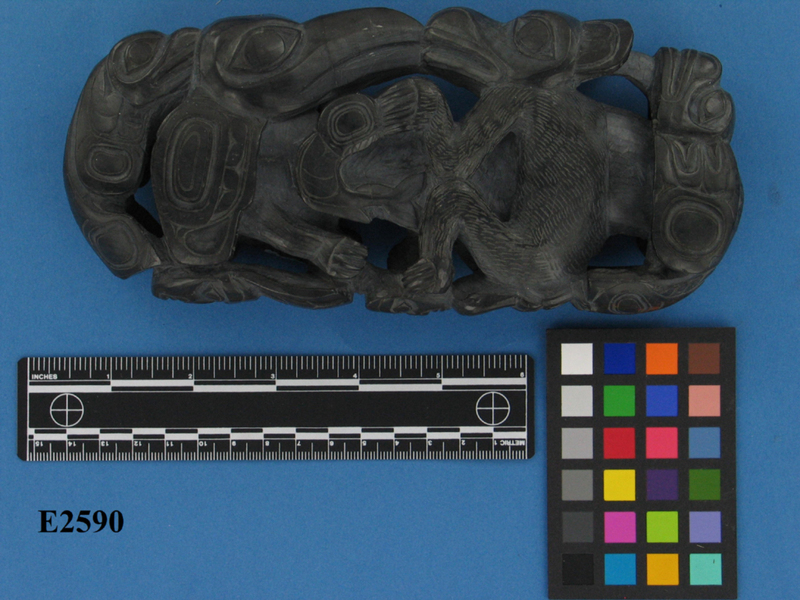
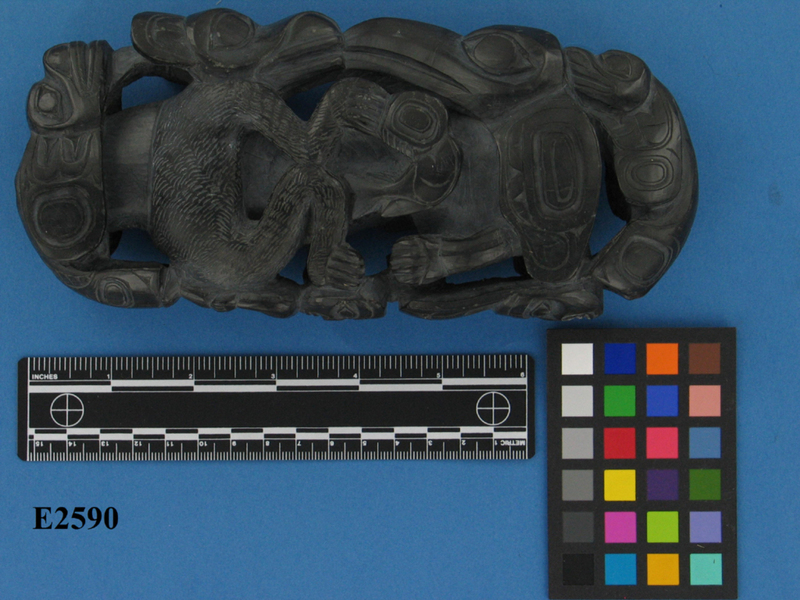
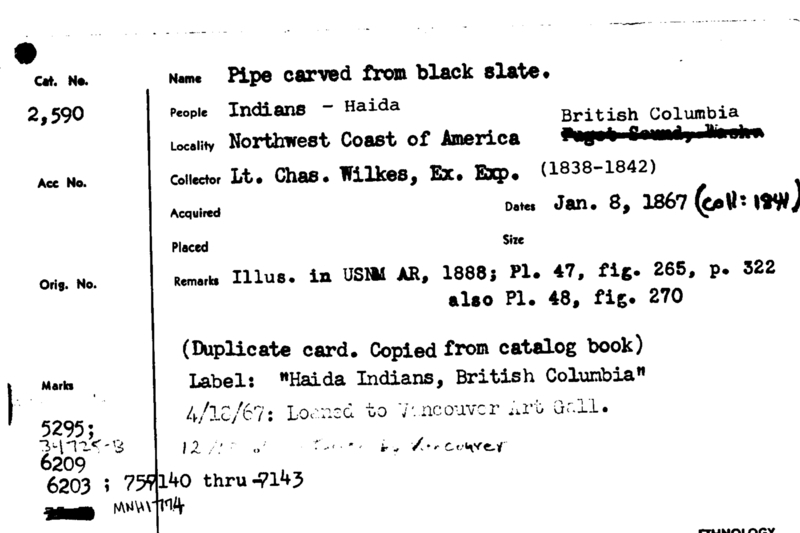
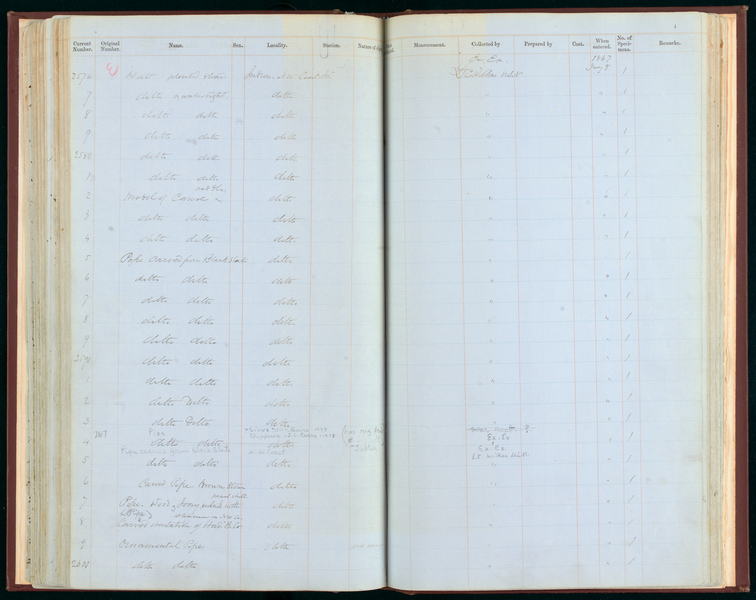
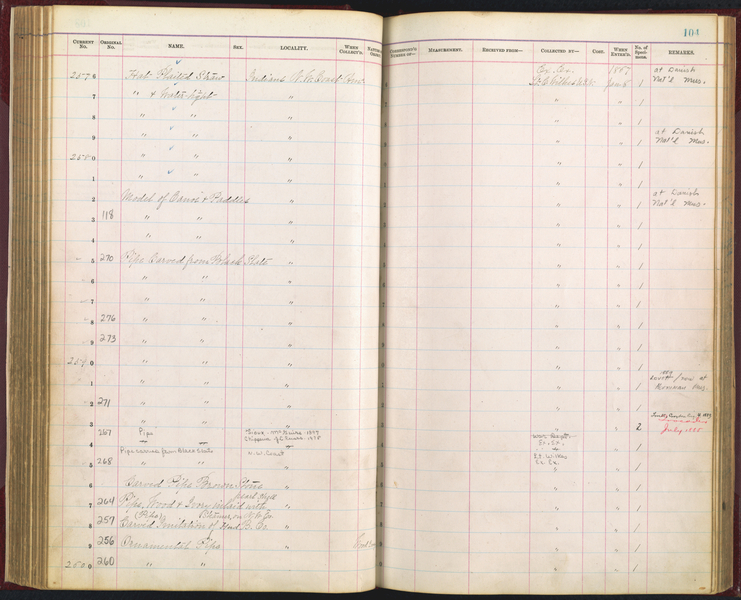
Notes
FROM CARD: "ILLUS. IN USNM AR, 1888 PL. 47, FIG. 265, P. 322, ALSO PL. 48, FIG. 270. (DUPLICATE CARD. COPIED FROM CATALOG BOOK) LABEL: "HAIDA INDIANS, BRITISH COLUMBIA." 4/18/67: LOANED TO VANCOUVER ART GALL.12/13/67 RETURNED BY VANCOUVER. [back of card] LOANED TO S.I. CENTENNIAL COMM. 7-9-75. LOAN RETURNED AUG. 3, 1988. LENT TO CANADIAN EMBASSY, NOV. 19, 1991. LOAN RETURNED NOV. 20, 1991."This appears to be the pipe illustrated in the center on p. 155 of Vol. 5 of Charles Wilkes, 1798-1877, Narrative of the United States Exploring Expedition. During the Years 1838, 1839, 1840, 1841, 1842., 1845 edition, Philadelphia. Printed from original "official" 1844 Philadelphia publication plates ed., 5 vols. (Philadephia: Lea and Blanchard, 1845).Argillite pipe carved with both animal and human figures. Rectangular in shape with rounded corners. The two central figures are a raven and a bear with their beak and mouth joining. The bear has a salmon in its paws. On the back of the bear and raven is a killer whale. The bowl for the pipe is the raven's head and the mouth piece in the killer whale's blow hole. On the bottom of the pipe are human figures. Linear manufacture marks are noted overall.Provenience note, in 1841 Oregon Territory encompassed the land from Russian Alaska to Spanish California and from the Pacific to the Continental Divide. The U.S. Exploring Expedition did not go to Canada, but did reach Oregon Territory in 1841, and carried out a hydrographic survey of the Columbia River from its mouth to the Cascades, as well as doing some surveying inland.They had dealings with Hudson's Bay Company staff during that time, and it is probable that the HBC is the source of a number of the Northwest Coast artifacts collected by the expedition. This object has been attributed as possibly Haida, based on its being made of argillite.
Item History
- Made in British Columbia, Canada ?
- Collected in British Columbia, Canada ? between 1838 and 1842
- Received from United States Exploring Expedition during 1858
What
- Name
- Pipe Carved From Black Slate
- Identification Number
- E2590-0
- Type of Item
- pipe
Who
- Culture
- Haida ?
- Received from
- United States Exploring Expedition
Where
- Holding Institution
- National Museum of Natural History
- Made in
- British Columbia, Canada ?
- Collected in
- British Columbia, Canada ?
When
- Collection Date
- between 1838 and 1842
- Acquisition Date
- during 1858
Other
- Accession Number
- 66A00050